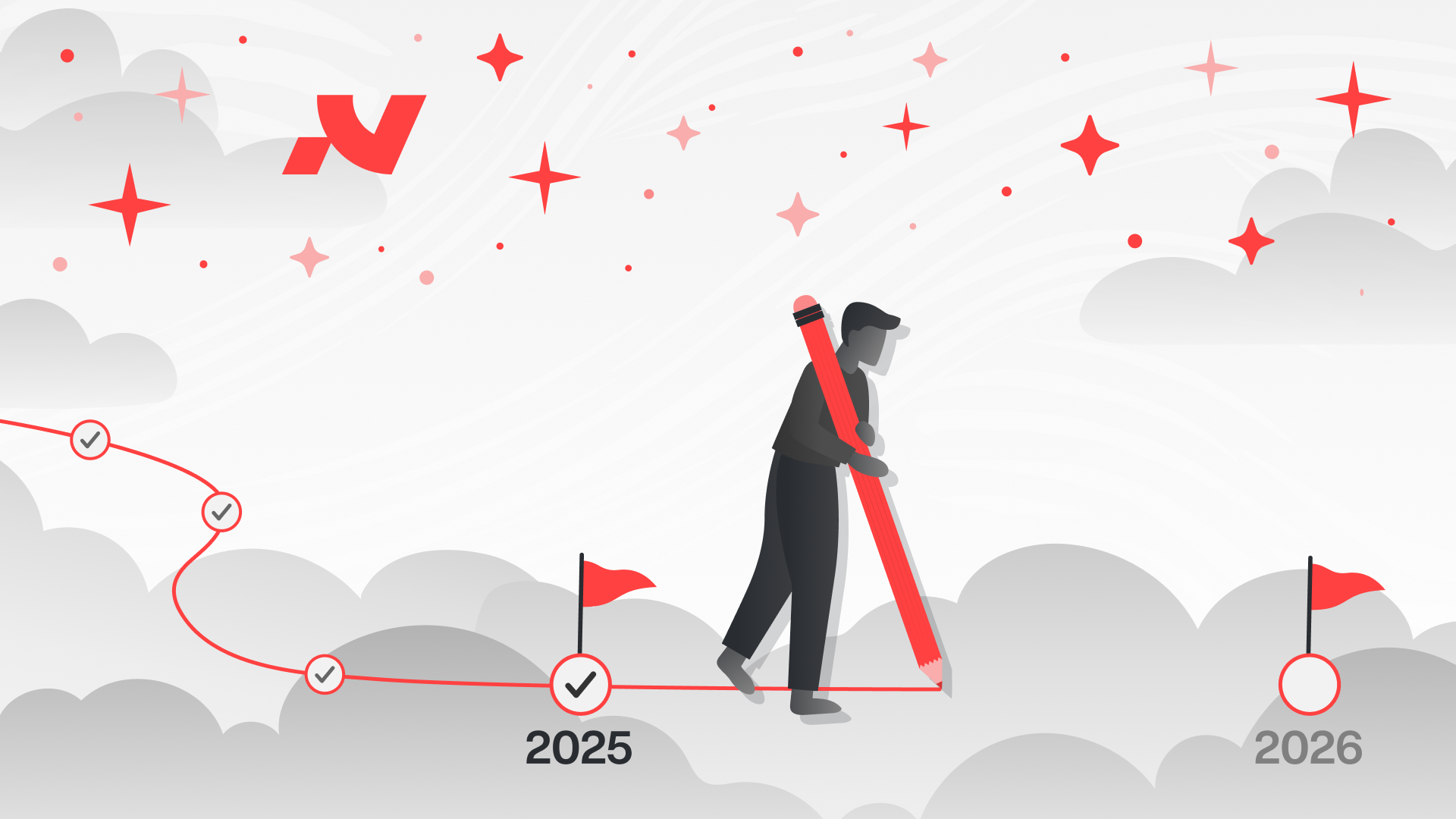Straight Line Thinking
.avif)
Why your team keeps tripping over its own shoelaces - and how to fix it.
The fastest way from Point A to Point B?
A straight f*cking line.
And yet, teams everywhere still insist on zig-zagging like it’s a goddamn obstacle course. From dissecting briefs to tackling dev tickets - everything should exist to minimize friction and maximize flow.
This is the playbook.
Clients Aren’t Idiots. But They Are Human
Most client fuckups aren’t malicious - they’re just uncertain. Vague briefs, conflicting priorities, weird icon requests that make you question your sanity… it’s all part of the game.
Our job? Not to nod and execute.
Our job is to guide.
“Use a unified icon style,” they say.
But the app uses outline icons. The site? Filled ones.
Unified my ass - that line is practically designed to start a civil war.
If it’s confusing to us, it’s already chaos to the client.
So we step in. We clarify. We structure. We lead.
“Unified Style” Means Nothing Without a Source of Truth
Design chaos 101: the icons are inconsistent.
Design chaos 102: no one knows which ones are current.
Design chaos 103: half the team’s using outdated assets.
This is why labeling, version control, and a shared language matter.
Add identifiers. Tag the icons. Create a damn library.
You think that sounds like overkill?
Cool - enjoy the next 3-hour “feedback” loop where no one’s sure what file is final.
Ask “Why?” - At Least 4 Times
“We need a new style guide.”
Why?
“For consistency.”
Why?
“So designers have a source of truth.”
Why?
“To reduce friction.”
Bing. Fakn. Bong.
Sounds like you need a Global Figma Component Library, not just a “style guide” that looks pretty and gathers dust over time.
Don’t just build what they ask for.
Figure out what they actually need.
Prioritize Like You’ve Got a Flight to Catch
You have 3 hours to launch a website page.
Time to spare? Zero.
Margin for error? Less than zero.
The smart move?
- Knock out anything dependent on others first.
- QA early, because feedback loops eat time.
- Only touch low-impact stuff after the critical path is clear.
Tasks have priorities. But so do the steps within each task.
Get that wrong, and you’re the bottleneck.
Pack Your Bag Before the Hike
Jumping into a task blind? Rookie move.
Before you lift a finger:
- Gather context
- Stack resources
- Ask questions
You don’t want to be halfway up the mountain only to realize…
you forgot your smokes. Or, y’know, the client’s font files.
Pad Your Estimates. Always
40% to 50% buffer - non-negotiable.
Why? Because timelines explode. People get sick. Slack derails you. Life happens.
Finishing early on a long deadline = hero.
Finishing late on a tight one = you’re the problem.
This isn’t about laziness. It’s about expectation management.
We’re Not a Family. But We Are a Damn Good Team
Asking for help isn’t weakness - it’s strategy.
Didn’t do the task before?
Not sure how to start?
Deadline breathing down your neck?
Ask. Delegate. Lean on the squad.
We don’t gatekeep knowledge. We move as a unit.
If you’re struggling alone, that’s on you.
Reinventing the Wheel Is Stupid. But Changing Tires Isn’t
We’re in 2025. Every 3rd Tuesday a new tool drops that’s faster, better, smarter.
“If it ain’t broke” is how legacy teams die slow, irrelevant deaths.
Always look for a better way:
- Tedious step? Automate it.
- Repetitive task? Template it.
- Confusing workflow? Burn it down and rebuild.
15 minutes of tool research can save you 5 hours of wasted effort.
Working Late Isn’t a Flex. It’s a Skill Issue
Anyone can grind 12 hours.
The real flex?
Doing it better, faster, smarter - and logging off at 4PM.
Lazy people (the smart ones) are often the fastest.
Why? Because they find the straight line and cut the fluff.
Strategic laziness is a superpower.
Get lazy. Get fast. Get clever.
TL;DR - Straight Line Thinking
- Eliminate ambiguity
- Ask “Why” until it hurts
- Prioritize like a surgeon
- Plan for chaos
- Delegate like a general
- Automate like it’s your job
- Stop flexing your burnout
- Cut corners - the smart way
This is how great teams move.
Not in circles. Not through chaos.
In a straight f*cking line.


